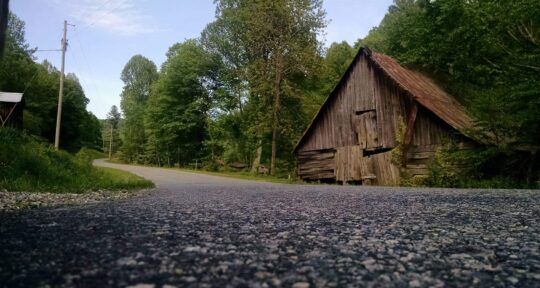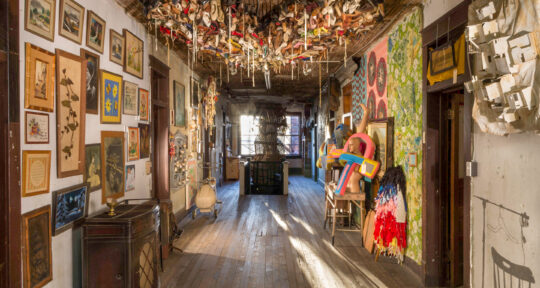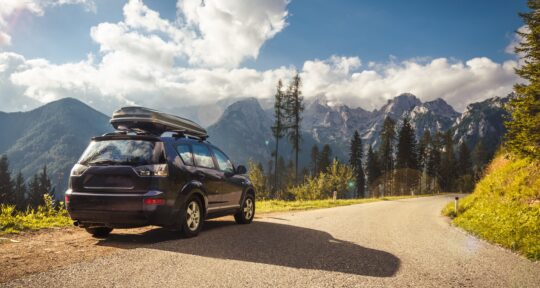North Carolina’s Outer Banks Scenic Byway winds through nostalgic beach towns tucked between the Atlantic Ocean and Pamlico Sound. Maritime history and wildlife dot the landscape of these barrier islands. Many consider the region a summer destination, however, the warm Gulf Stream invites thousands of migrating birds via the Atlantic Flyway to winter in the region’s maritime forests, dunes, and brackish impoundments.
A wintertime trip to this coastal destination highlights slow travel through unspoiled nature. This journey is about embracing Mother Nature and her feathered friends. Here are seven of our favorite places to spot wildlife in the winter along the Outer Banks Scenic Byway.
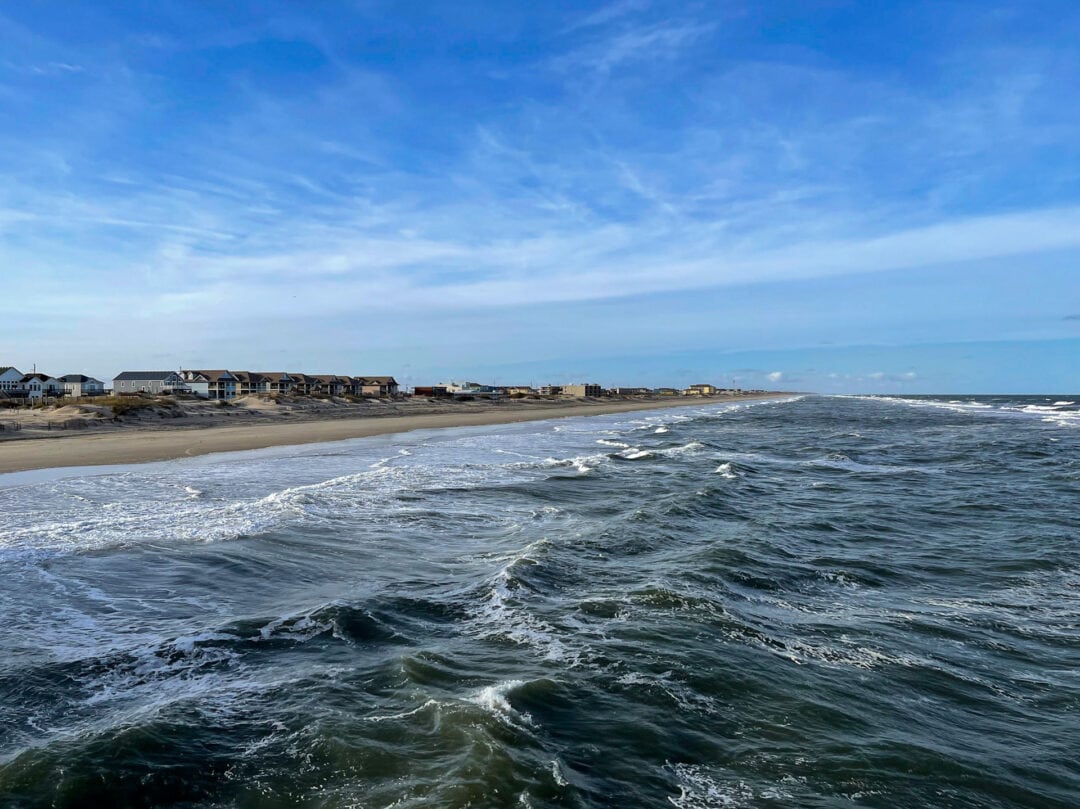

1. South Nags Head
South Nags Head is a convenient location to launch your exploration of Cape Hatteras National Seashore or Alligator River National Wildlife Refuge. You’ll find hotels, cottages, and house rentals in this beach town. Fresh North Carolina seafood, especially shrimp, is a must-try at the Blue Water Grill & Raw Bar. After a long day, you can warm up by the fireplace with a craft brew at Swells’a Brewing.
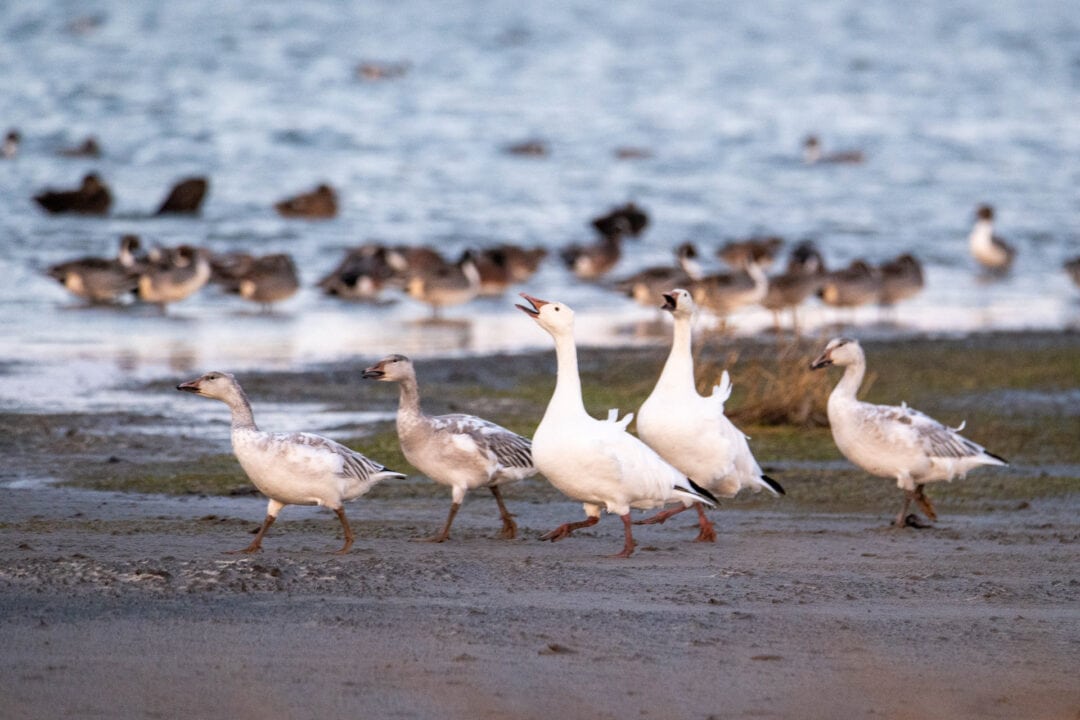

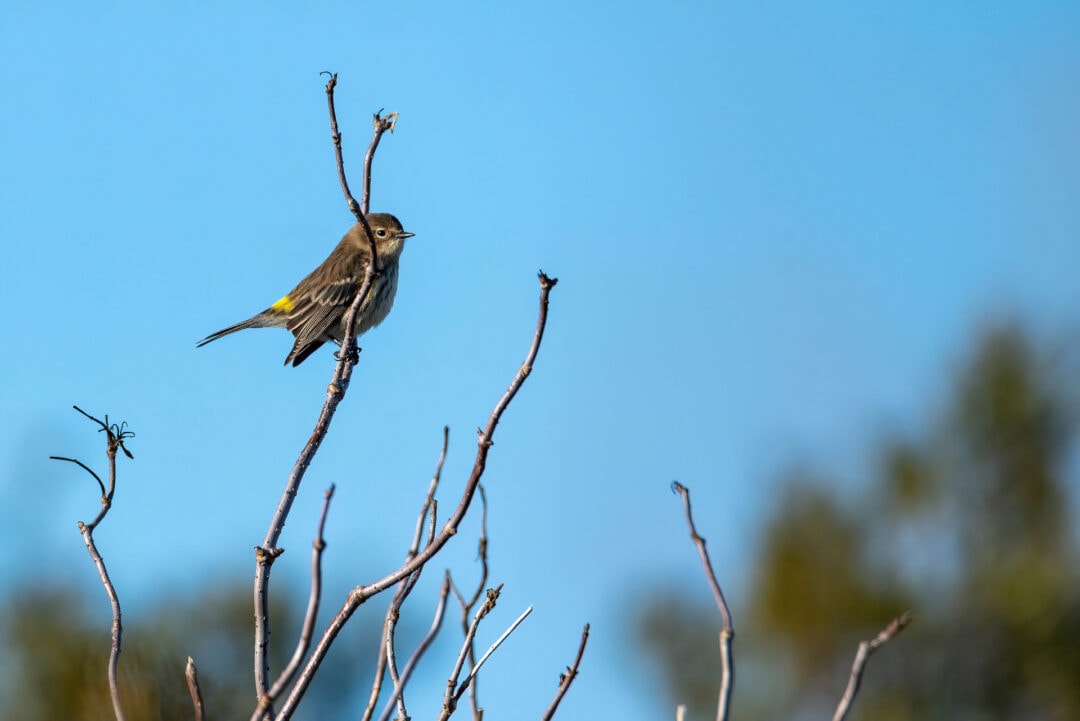

2. Cape Hatteras National Seashore
Cape Hatteras National Seashore, the nation’s first seashore designated as such, stretches from South Nags Head to Ocracoke Inlet. The designation helps protect this dynamic landscape, which is continually reshaped by wind, waves, and passing storms. Wind, especially in the winter, is a constant here.
The 70-mile drive alone is magical. Sand dunes encroach upon the highway and create an otherworldly landscape. You’ll see salt marshes and dune grasses ripple in the wind. Seven small villages dot the seashore as indicators of the past and present. For generations, fishing has been a way of life and is evident with the many fish markets and trawlers. Like at Oceana’s Bistro in Avon, fresh fish and friendly conversation are always on the menu.
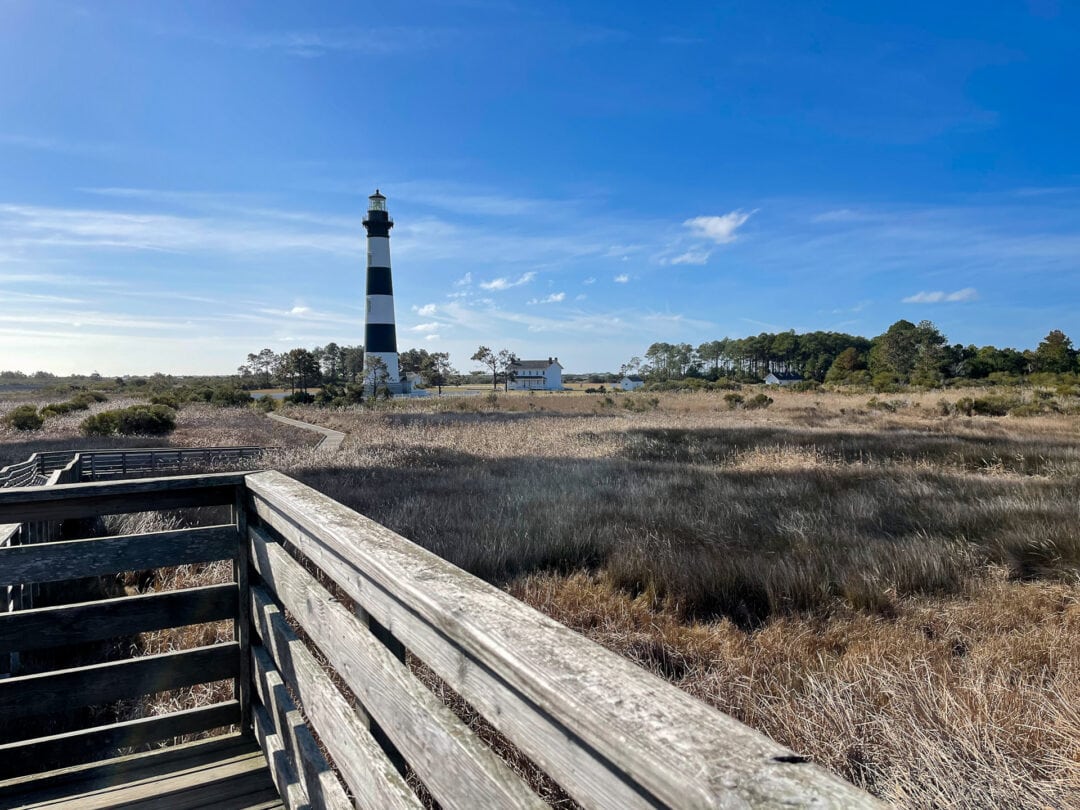

3. Bodie Island Light Station
Built in 1872, the Bodie Island Light Station still functions as a beacon for ships in the Atlantic Ocean. This black-and-white striped icon is a must-see; the lightkeeper house contains a museum filled with history.
A wooden boardwalk leads visitors through nature to an observation tower overlooking the sound, which provides a respite for ducks, egrets, and herons. During a winter visit, tundra swans gracefully land in the distance. The forest on the light station grounds is also a great place to find wintering songbirds. With a bit of patience, you might get lucky and spot yellow-rumped warblers flying among the brush.
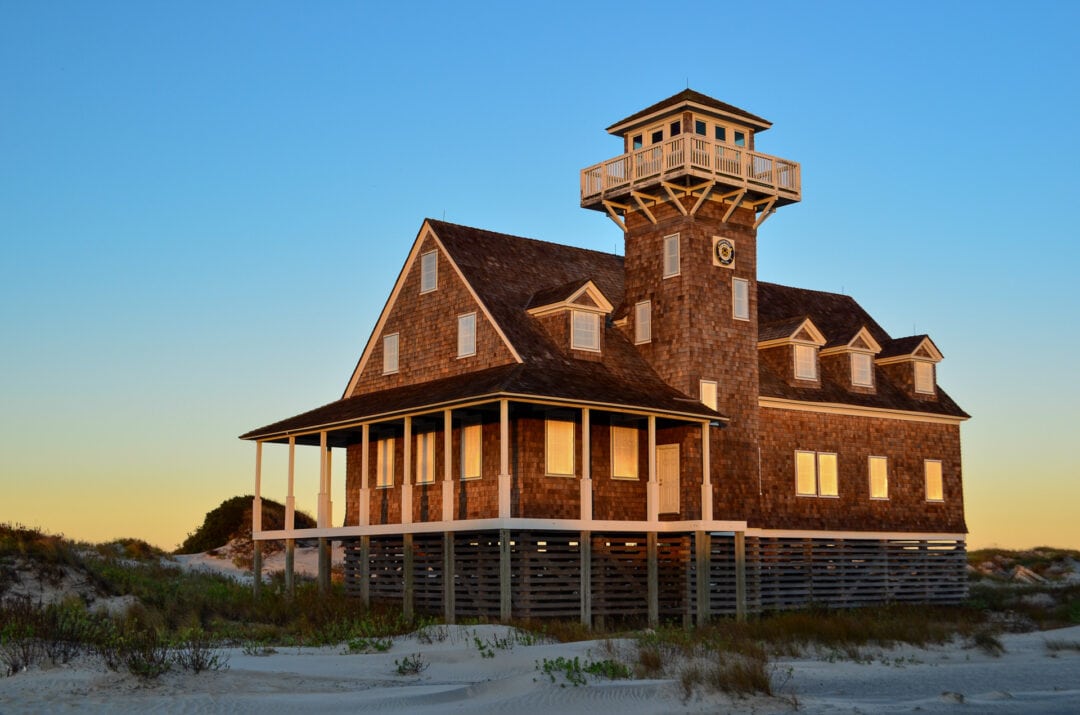

4. Bonner Bridge Pier
The Oregon Inlet separates Hatteras Island from the northern beaches. The Bonner Bridge once crossed this 2.5-mile wide span. Today, the Marc Basnight Bridge brings traffic across the islands. The Bonner Bridge is now an active fishing pier and a joy for bird watchers. Cormorants gather in the hundreds on the Basnight Bridge pylons. Brown pelicans and various kinds of gulls happily glide through the air.
The nearby dunes also house wintering shorebirds. The restored Oregon Inlet Life-Saving Station, on the National Register of Historic Places, is perched among the sandy ridges. Windswept dunes lead to the vast, seashell-filled beach for even more birding opportunities.
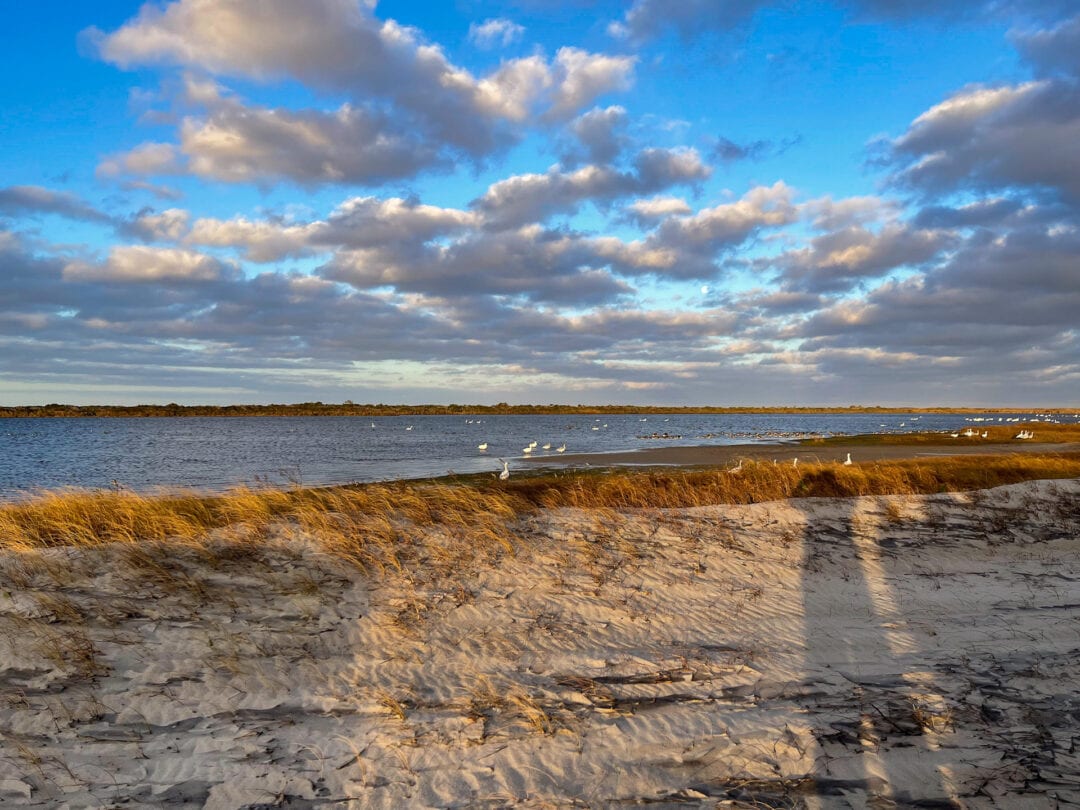

5. Pea Island National Wildlife Refuge
With its 5,834 acres of land and 25,700 acres of water, Pea Island National Wildlife Refuge is a wildlife lover’s paradise. The winter is a particularly magnificent time as thousands of birds arrive to feed on seeds, berries, and grain from fields.
In a single day, you can spot more than 40 different bird species, including northern pintails, American wigeons, green-winged teal, great egrets, white ibis, and peregrine falcons. The salt marshes and ponds are easily accessible from the side of the road, so you can pull over and watch snow geese graze on the shore while American avocets huddle together.
A half-mile, handicap-accessible trail at the North Pond takes you to a two-story observation tower, highlighting the untamed nature that brushes against the sound. The nearby visitor center has educational exhibits and scopes, with friendly volunteers who will happily point out unique species like a wayward Eurasian wigeon, which typically winters on the West Coast.
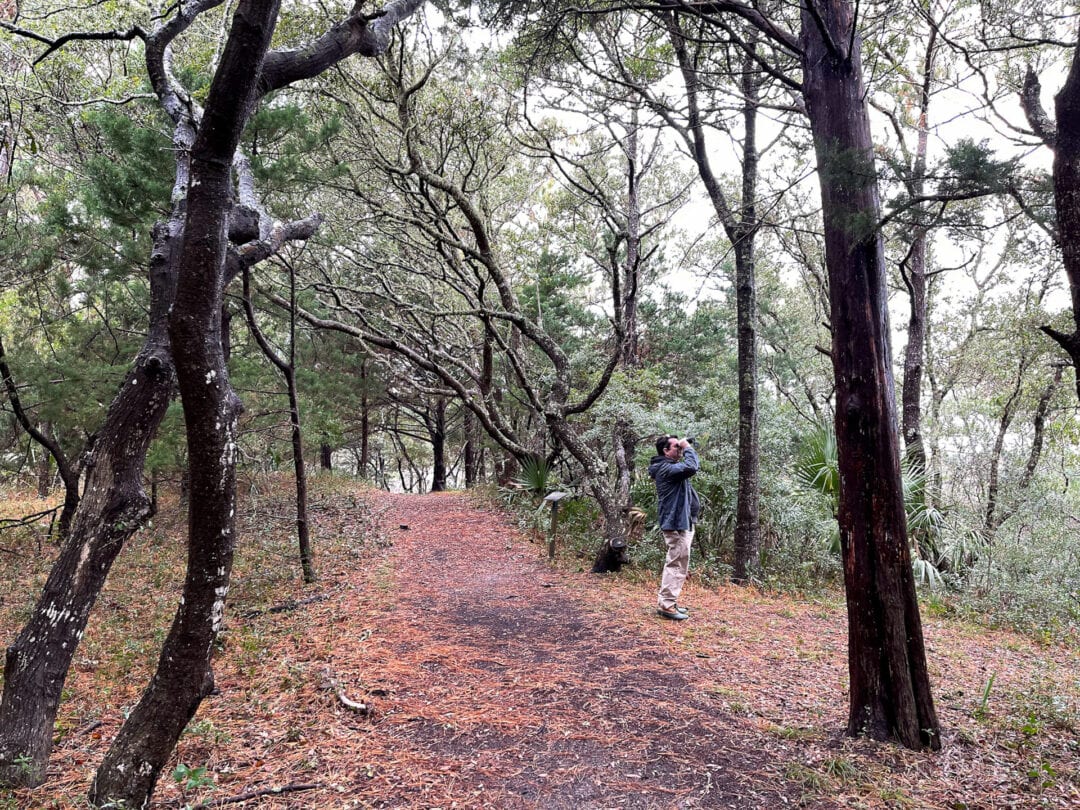

6. Buxton Woods
Buxton sits on the widest part of the barrier island. Buxton Woods, a maritime forest, feels natural and untamed. As you hike the 0.75-mile Buxton Woods Trail, watch out for raccoons, foxes, river otters, and more playing underneath the forest canopy.
A well-known symbol of the Outer Banks, the black-and-white striped Cape Hatteras Lighthouse is located just a few minutes from the trailhead. Due to the ever-changing Atlantic Ocean, engineers relocated the lighthouse a half-mile inland in 1999, and a museum highlights the technical challenges of this move along with the lighthouse’s maritime history.
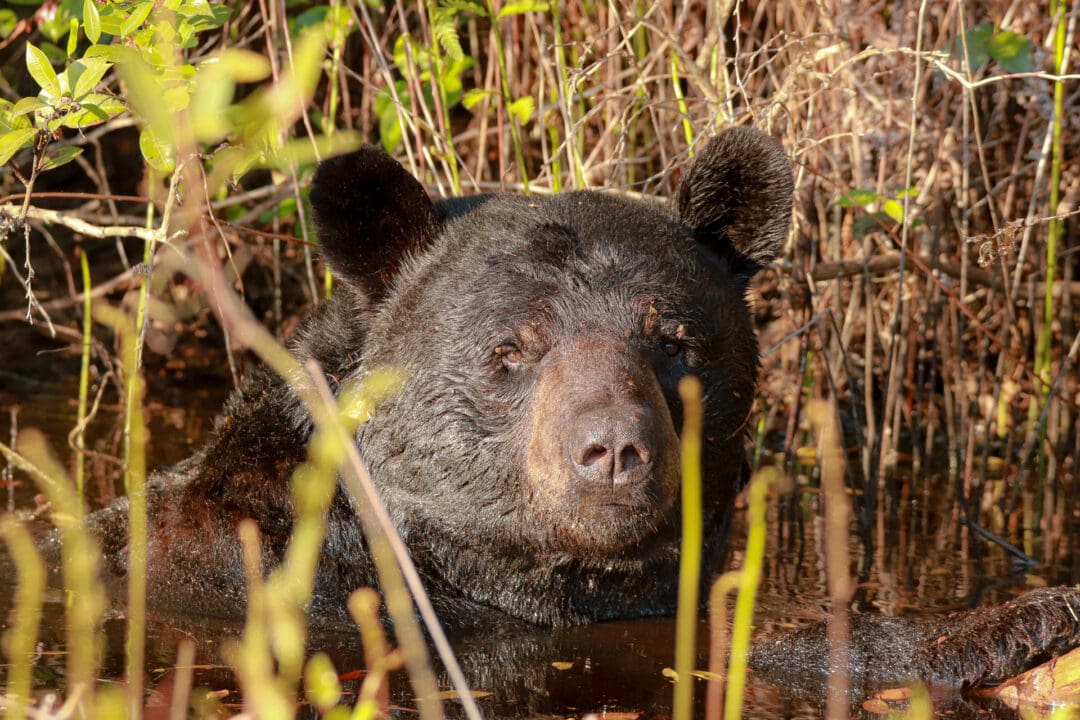

7. Alligator River National Wildlife Refuge
Wildlife lovers should also visit Alligator River National Wildlife Refuge on the North Carolina mainland. While some alligators can be found in the river, most visitors come here to spot black bears. Due to abundant food sources, the bears here don’t hibernate in the winter. Instead, they slow their activity and in the early morning, you’ll see bears foraging in the fields.
A series of roads and trails crisscross this wildlife refuge, where you may see tundra swans and pintail ducks in the flooded fields. Barred owls, bald eagles, red wolves, and river otters also call this sanctuary home.

